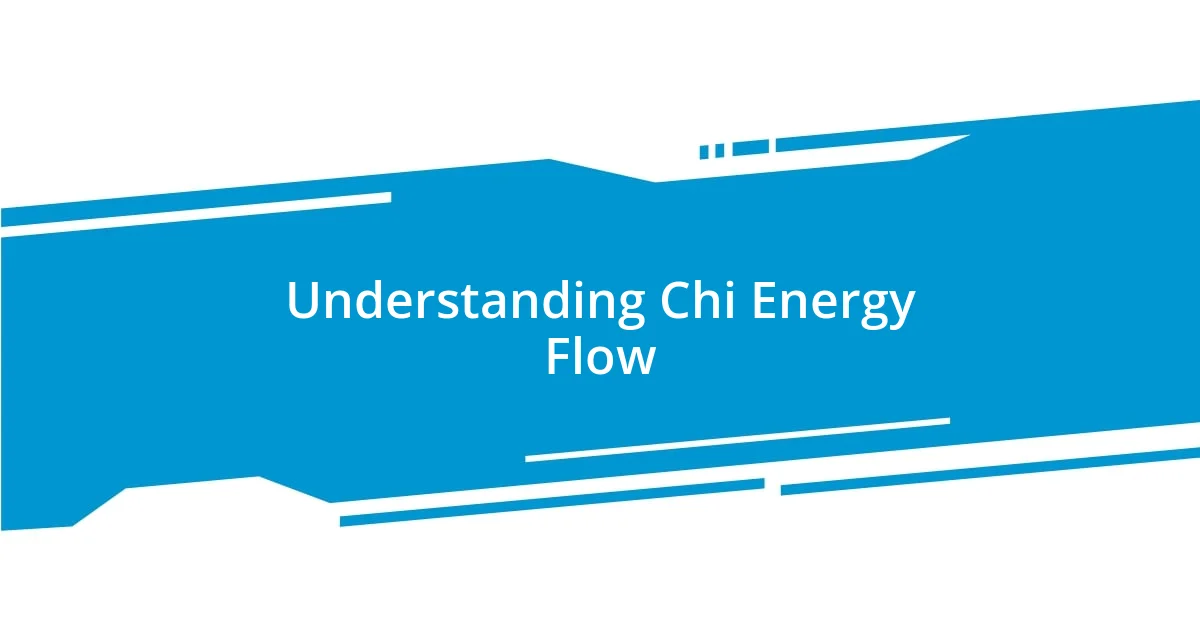Key takeaways:
- Feng Shui is an art of arranging environments to foster emotional and spiritual well-being, utilizing elements like wood, fire, earth, metal, and water to enhance energy flow.
- Chi energy flow is vital; decluttering and thoughtful space arrangement improve energy circulation, creating inviting and harmonious living spaces.
- Colors significantly impact mood and energy; specific hues like red, green, and blue can evoke feelings of vitality, tranquility, and balance in one’s environment.

Introduction to Feng Shui Principles
Feng Shui, at its core, is the art of arranging our environment to create harmony and balance. I remember the first time I rearranged my living space based on Feng Shui principles, only to discover a refreshing sense of calm I hadn’t felt before. It made me wonder: how many of us overlook the impact our surroundings have on our well-being?
Different elements play a role in Feng Shui, each with its unique significance, such as the energy of water for flow or the stability of earth for grounding. I still chuckle when I think about strategically placing a small fountain in my garden. The soothing sounds brought not just beauty but also a sense of serenity that transformed my entire outdoor experience. Isn’t it fascinating how small changes can evoke such profound feelings?
As we delve into these principles, it’s crucial to recognize that Feng Shui isn’t merely about aesthetics; it’s about fostering an environment that nurtures us emotionally and spiritually. Have you ever walked into a space and immediately felt uplifted? That’s the kind of positive energy we aim to cultivate through these practices. By harmonizing our spaces according to Feng Shui, we can create a sanctuary tailored to our needs.

Key Elements of Feng Shui
The key elements of Feng Shui revolve around the five fundamental forces: wood, fire, earth, metal, and water. Each element carries its own essence and influences how energy, or “chi,” flows within a space. I remember when I introduced more wood elements into my home, like plants and wooden furniture. It not only brightened up the area but also infused a refreshing vibrancy that made me feel more connected to nature.
Here are the key elements to consider:
- Wood: Symbolizes growth and vitality. Incorporating plants or wooden decor can enhance creativity.
- Fire: Represents passion and transformation. Using warm colors or candles can invigorate emotions.
- Earth: Offers stability and nourishment. Earthy tones or ceramics help ground the energy in any space.
- Metal: Stands for clarity and precision. Integrating metallic decor can enhance focus and efficiency.
- Water: Reflects flow and abundance. Water features or blue colors invite calm and prosperity into life.
By harmonizing these elements, we can intuitively shape environments that reflect our desires and aspirations. As I embraced these principles, I couldn’t help but notice how my home felt more like a nurturing cocoon, vibrating with the positive energies I had intentionally woven into my daily life.

Understanding Chi Energy Flow
Understanding Chi energy flow is essential in Feng Shui, as it represents the life force that circulates through our environments. I often describe chi as the positive energy that animates our surroundings, making them feel alive and vibrant. When I placed mirrors in strategic locations, I noticed how they amplified light and made the space feel more expansive, as if the chi was dancing around me, energizing the whole area.
A key aspect of fostering good chi flow is to eliminate clutter. Just last month, I tackled my overflowing bookshelf, and the moment I cleared out old books, I could literally feel the heaviness lighten. With more space, energy began to flow freely, making the room feel inviting rather than overwhelming. It’s remarkable how a simple act of decluttering can transform the energy in a space.
To enhance chi energy, I’ve also learned the importance of balance in a room’s layout. I remember rearranging my living room furniture to create a harmonious flow that improved movement and interaction. This intentional setup allowed the chi to move seamlessly, creating a sense of togetherness that warmed our family gatherings. By mindfully considering how energy circulates, we create spaces that foster wellness and positivity.
| Chi Energy | Importance |
|---|---|
| Layout | Guides movement and interaction |
| Clutter | Blocks energy flow |
| Natural Elements | Enhances vitality and connection |

The Importance of Space Arrangement
Space arrangement plays a crucial role in establishing harmony within a living environment. I still remember the first time I rearranged the furniture in my bedroom; it felt as though a fresh breeze swept through my space. The placement of my bed, facing the door yet away from direct line of sight, created a sense of safety and empowerment that I had been lacking. It’s fascinating how a simple shift can transform not just the room, but the way I feel within it.
When I think about how furniture placement impacts energy flow, I often reflect on my dining area. I made a conscious choice to center the table under a beautiful light fixture, encouraging family connections and conversations. It’s amazing how such details—like ensuring ample space for chairs to be pulled out easily—can make my gatherings more inviting. Have you ever felt the difference in energy when everyone is comfortably engaged around a table? It’s a subtlety that speaks volumes about intentional space arrangement.
Additionally, considering the pathways within a room has been enlightening. I used to overlook how important clear pathways are for movement until I stumbled upon a beautifully arranged living space. The open layout naturally guided visitors through the room and towards engaging conversations. Now, I prioritize ensuring that every piece of furniture has a purpose, enhancing the flow instead of hindering it. This intentional arrangement not only organizes the room visually but also uplifts the overall atmosphere, creating a welcoming environment that invites energy and interaction.

Colors and Their Meanings
When it comes to colors and their meanings in Feng Shui, I find it fascinating how each hue can evoke specific emotions and energies. For instance, red is often associated with passion and vitality. I recall painting a small accent wall in my home office a vibrant red, and the immediate shift in my motivation was astonishing. It felt as if a surge of creativity flowed through me, invigorating my work ethic. What color has ever sparked something within you?
Moving to the calming nature of greens, I must say they hold a special place in my heart. When I added greenery and soft green tones to my living space, it felt like stepping into a tranquil oasis. Green symbolizes growth and abundance, and I felt a profound connection to nature during moments of relaxation. It’s interesting how a color can set the tone of an entire room, don’t you think?
Blue, on the other hand, represents serenity and communication. I painted my bedroom a soft blue, aiming for a restful ambiance, and it truly transformed my bedtime routine. Every night, I would sink into my sheets and feel the soothing qualities of blue wash over me. I can honestly say that when I wake up, I feel more balanced and ready to face the day. Have you tried incorporating calming colors into your spaces? You might just be surprised by the mood they create.














